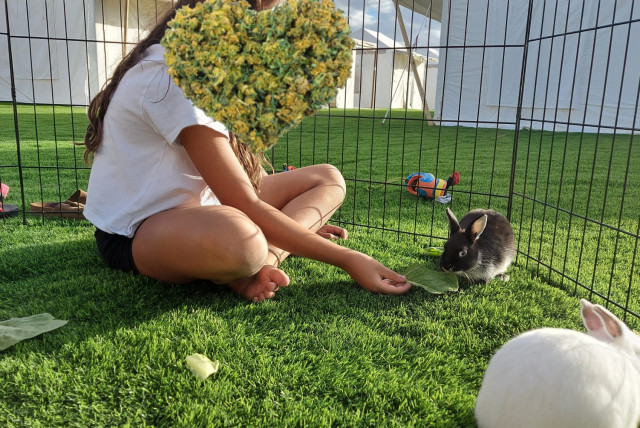Most rabbit owners can recognize pain in their pets but not subtler kinds, study finds

Most rabbit owners can recognize pain in their pets but not subtler discomfort, UK study finds
Rabbits are multiplying—not only with their babies but as pets in many countries around the world. They are cuddly and quiet, don’t need to be walked, eat inexpensive food, and can even be left alone for quite a while without expressing separation anxiety.
In the UK alone, while almost a third of homes have a dog and a quarter have cats, bunnies come in third with 1.5 million rabbits (2.8% of all homes), followed by indoor birds and hamsters and way behind by guinea pigs, turtles and tortoises, lizards, snakes, and domestic fowl.
Rabbit pain can be caused by various reasons, including disease, accidental injury, and planned surgical procedures. Bone fractures are considered to be the most painful condition. It’s essential for all pet owners to recognize when the animals are in pain, as many hide their distress or illness as their ancestors did in the wild.
Rabbit owners should know when to seek help to protect their rabbits' welfare. Now, new research by the University of Bristol Veterinary School has found that while most rabbit owners could list signs of pain and mostly identify pain-free rabbits and those in severe pain, many lacked knowledge of the subtler signs of pain.
The study, published in BMC Veterinary Research, “An investigation into how accurately UK rabbit owners identify pain in their pet rabbits,” provides the first insight into how rabbit owners identify pain and their general ability to apply this knowledge to detect pain accurately.
Rabbits hide signs of illness, pain

Rabbits are prey species and have evolved to hide signs of illness and pain. Recent research has developed pain scales for use by veterinary professionals, but research hasn’t investigated rabbit owners’ ability to recognize pain in their animals.
The study explored how owners identify pain in their pet rabbits and their ability to correctly spot different pain levels and find areas in which owners would benefit from education.
Owners were recruited via various routes, including Facebook, and completed a two-part online survey. The first part collected data on demographics, owners’ knowledge of pain signs, and beliefs about pain in rabbits.
The second part asked respondents to compare eight pain-score videos recorded during routine veterinary treatment of rabbits with different pain levels to pain scores made by three experts.
A total of 500 people completed part one of the survey, and 345 completed part two. Most respondents were able to identify five signs of pain (such as anorexia and changes in posture and movement). Still, many were less aware that decreases in grooming behavior and changes to eye-and-ear position can also be signs of pain.
Women, people who worked with rabbits, and those with experience of their rabbit having an operation recognized pain more accurately. Overall, 98.6% of respondents thought correctly that rabbits felt pain as much or more than dogs and cats.
In part two, respondents more frequently agreed with the experts when identifying rabbits with no pain (88.8%) and severe pain (65.2 %), but there was lower agreement when recognizing mild (28.4 %) and moderate pain (43.2%).
Respondents rated pain lower than experts, with an average total pain score of 11.9 compared to 18 given by the expert. Dr. Nicola Rooney, a senior lecturer in wildlife and conservation at Bristol and the corresponding author, said: “Most rabbit owners were able to list numerous pain signs and were generally able to recognize pain-free rabbits and those in severe pain.
Owners’ ability to differentiate between mild and moderate pain is more limited, and they could benefit from training in the subtler signs of pain. Veterinary professionals should also know areas where owners’ knowledge can be improved.”
The lead author, Charlotte Forder, conducted the study for her final bachelor of science in veterinary nursing and veterinary science research dissertation. She added: “Our study highlighted a gap in the communication between owners and veterinary professionals.
Speaking to and advising owners when animals have procedures is essential so the animal has the best outcome. It is also an excellent opportunity for the veterinary community to educate owners about signs of pain in rabbits.”
Jerusalem Post Store
`; document.getElementById("linkPremium").innerHTML = cont; var divWithLink = document.getElementById("premium-link"); if (divWithLink !== null && divWithLink !== 'undefined') { divWithLink.style.border = "solid 1px #cb0f3e"; divWithLink.style.textAlign = "center"; divWithLink.style.marginBottom = "15px"; divWithLink.style.marginTop = "15px"; divWithLink.style.width = "100%"; divWithLink.style.backgroundColor = "#122952"; divWithLink.style.color = "#ffffff"; divWithLink.style.lineHeight = "1.5"; } } (function (v, i) { });
